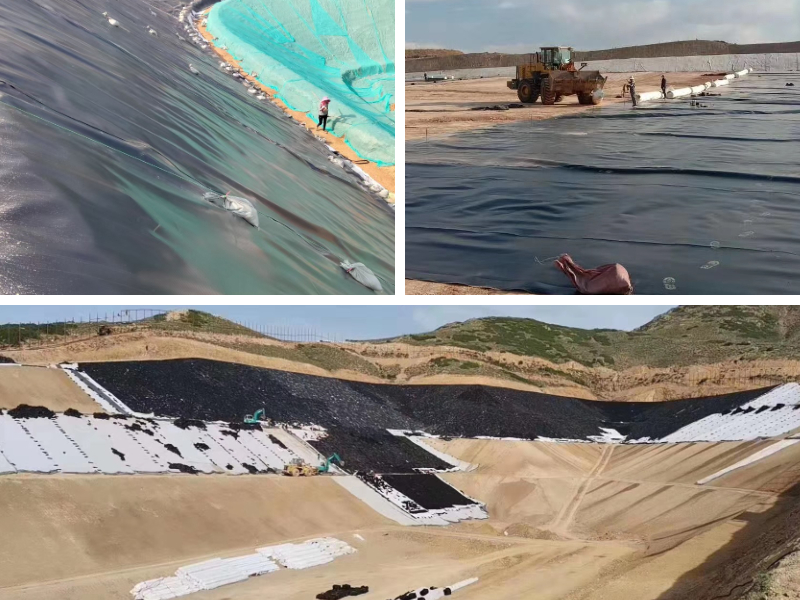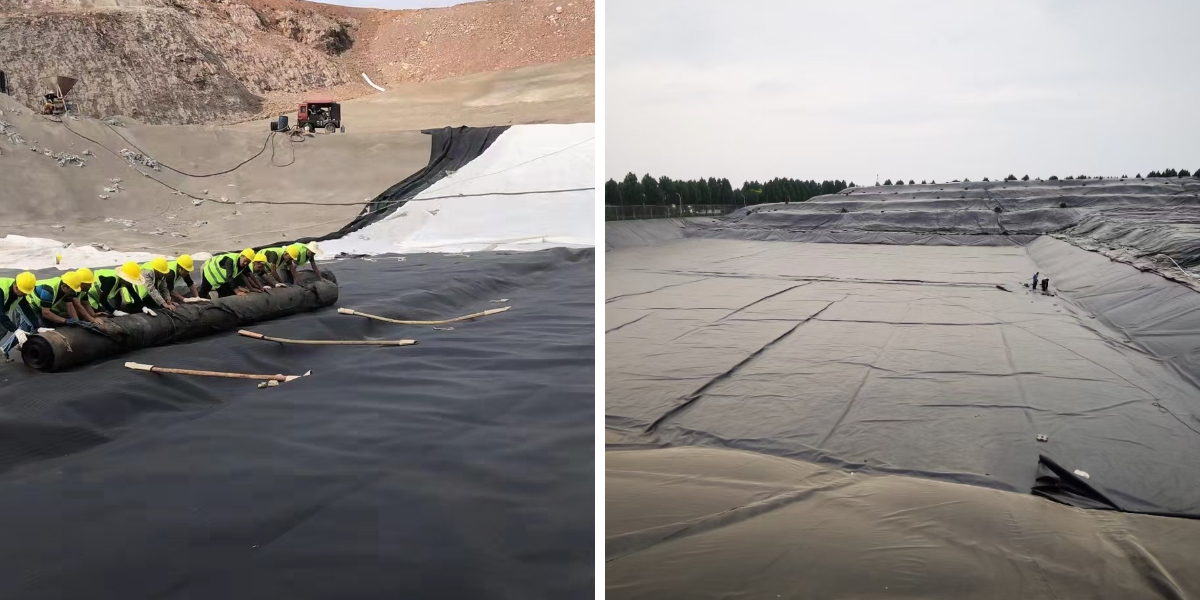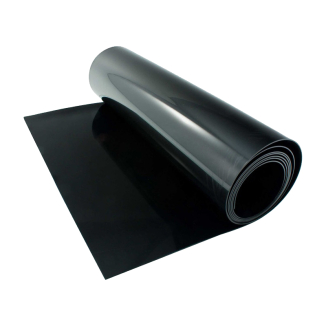Agricultural Uses: HDPE Geomembranes for Irrigation Ponds and Dams
Water is the lifeblood of agriculture, and environment friendly water storage is imperative for sustaining crops, livestock, and farm profitability—especially in areas inclined to drought or erratic rainfall. Irrigation ponds and small dams are crucial for shooting and storing water, however their effectiveness relies upon on stopping leakage. HDPE geomembrane (high-density polyethylene geomembrane) has emerged as the gold wellknown for agricultural water storage, providing unmatched geomembrane waterproofing overall performance and durability. As a specialised geomembrane liner, it creates a seamless barrier that retains water, reduces waste, and protects soil health. This information explores why HDPE geomembrane is perfect for irrigation ponds and dams, its key advantages for farmers, set up first-class practices, and how it enhances long-term water administration efficiency. By selecting the proper geomembrane liner, farmers can tightly closed their water provide and construct resilient agricultural systems.
Why HDPE Geomembrane Stands Out for Agricultural Water Storage
Irrigation ponds and dams face special challenges: regular water pressure, soil movement, UV exposure, and workable injury from farm gear or livestock. Traditional liners (e.g., clay, asphalt, or low-grade plastics) frequently fail below these conditions, main to high priced leaks and water loss. HDPE geomembrane addresses these challenges thru its inherent cloth homes and engineered design.
At its core, HDPE geomembrane is a dense, thermoplastic sheet with a linear molecular shape that minimizes water permeability. Unlike porous clay liners, which permit seepage over time, or skinny plastic sheets that tear easily, HDPE creates a clearly impermeable barrier. Its geomembrane waterproofing functionality is in addition superior by way of heat-fused seams, which put off susceptible factors and create a single, non-stop liner. For farmers, this ability much less water loss, decrease pumping costs, and dependable get right of entry to to saved water when vegetation want it most.
Key Benefits of HDPE Geomembrane Liner for Irrigation Ponds & Dams
As a geomembrane liner for agricultural water storage, HDPE geomembrane presents a vary of farmer-centric advantages that go past primary waterproofing:
1. Superior Water Retention & Leak Prevention
The essential gain of HDPE geomembrane is its exquisite geomembrane waterproofing performance. Its low permeability price ensures minimal water seepage—far decrease than clay or different artificial liners. This is integral for irrigation ponds, the place even small leaks can waste hundreds of gallons of water over time. For example, a 1-acre pond lined with HDPE can continue 95%+ of its water, in contrast to 70–80% with a clay liner. This water financial savings interprets at once to decreased irrigation charges and extra dependable crop hydration in the course of dry spells.
2. Durability Against Agricultural Stressors
Farm environments are harsh, however HDPE geomembrane is constructed to face up to them. It resists UV radiation, so it won’t degrade in direct sunlight—even in hot, sunny climates. It’s additionally abrasion-resistant, standing up to contact with farm equipment, cattle hooves, and sharp soil particles. Unlike fragile liners that tear easily, HDPE’s tensile energy permits it to stretch barely barring breaking, adapting to minor soil motion or pond settlement. This sturdiness ability the geomembrane liner lasts for decades, lowering the want for luxurious replacements.
3. Soil & Environmental Protection
HDPE geomembrane doesn’t simply hold water—it protects soil and groundwater. By preventing water seepage, it stops nutrient-laden irrigation water from leaching into the soil, lowering the chance of groundwater contamination. It additionally prevents soil erosion inside the pond, as the easy liner limits sediment disturbance from water movement. For natural farms or areas with strict environmental regulations, this geomembrane liner ensures compliance whilst safeguarding nearby ecosystems.
4. Cost-Effectiveness Over Time
While the upfront value of HDPE geomembrane may additionally be greater than clay or low-grade liners, its lengthy lifespan and low renovation make it greater reasonably-priced in the lengthy run. Clay liners require normal repairs (e.g., re-compacting after heavy rains) and regularly fail inside 5–10 years. HDPE liners, by way of contrast, remaining 20–30+ years with minimal upkeep. They additionally minimize pumping prices via holding greater water, and their mild weight lowers transportation and set up prices in contrast to inflexible alternatives.
Installation Best Practices for HDPE Geomembrane in Irrigation Projects
Proper set up is key to maximizing the overall performance of HDPE geomembrane as a geomembrane liner. Follow these first-class practices to make sure a seamless, leak-free result:
1. Site Preparation
Clear the pond or dam website online of rocks, roots, debris, and sharp objects that may want to puncture the liner. Level the soil to create a easy base, and compact it to stop settlement. For uneven terrain, use a non-woven geotextile underlay underneath the HDPE geomembrane—this provides an more layer of safety towards abrasion and punctures.
2. Seam Installation
Seams are the most vital section of geomembrane waterproofing. Use warmth fusion (hot wedge or extrusion welding) to be a part of HDPE sheets—this creates a molecular bond that’s as robust as the liner itself. Ensure seams are overlapped through 15–30 cm and examined for leaks (via vacuum checking out or air strain testing) earlier than filling the pond. Avoid the usage of adhesives, as they create weaker seams that are inclined to failure.
3. Anchoring & Edge Protection
Anchor the HDPE geomembrane alongside the pond’s edges the usage of anchor trenches (30–60 cm deep) crammed with compacted soil. This prevents the liner from moving when the pond is crammed with water. Install side safety (e.g., rock riprap or concrete curbs) to defend the liner from harm through equipment, livestock, or weather.
4. Filling & Maintenance
Fill the pond slowly to enable the geomembrane liner to regulate to water pressure—rapid filling can motive stretching or tearing. After installation, look into the liner many times for injury (e.g., punctures, seam separation) and restore small troubles right away with HDPE patches and warmth fusion. Avoid dragging heavy gear throughout the liner, and preserve cattle away from the edges to forestall unintentional damage.
Real-World Agricultural Applications of HDPE Geomembrane
HDPE geomembrane is versatile ample to go well with any agricultural water storage need, from small irrigation ponds to medium-sized dams:
1. Crop Irrigation Ponds
For row crops, orchards, or vineyards, HDPE-lined ponds save water for drip irrigation, sprinklers, or flood irrigation. The geomembrane waterproofing ensures water is handy throughout height demand, lowering reliance on groundwater or municipal supplies. Farmers can additionally seize rainwater in these ponds, reducing water expenses and enhancing drought resilience.
2. Livestock Watering Dams
Livestock dams require long lasting liners that can stand up to regular animal traffic. HDPE geomembrane’s abrasion resistance makes it best for this use, as it won’t tear from cattle hooves or equipment. The liner additionally maintains the dam water easy by using stopping soil erosion, lowering the want for commonplace cleaning.
3. Aquaculture Ponds
Fish and shrimp farms depend on steady water great and volume. HDPE geomembrane as a geomembrane liner prevents water seepage and continues sediment from mixing with the water, growing a more healthy surroundings for aquatic life. It additionally makes pond cleansing easier, as waste doesn’t penetrate the soil.
Conclusion: HDPE Geomembrane—The Foundation of Efficient Agricultural Water Storage
HDPE geomembrane is extra than simply a geomembrane liner—it’s a strategic funding in agricultural resilience. Its top-quality geomembrane waterproofing, durability, and cost-effectiveness make it the best preference for irrigation ponds and dams, assisting farmers keep water, minimize costs, and shield the environment.
In an technology of growing water shortage and unpredictable weather, securing dependable water storage is non-negotiable. By selecting HDPE geomembrane, farmers can construct irrigation structures that stand the take a look at of time—ensuring their plants and cattle have get admission to to water when they want it most. Whether you’re constructing a new pond or repairing an historical dam, HDPE geomembrane provides the overall performance and peace of thought that modern-day agriculture demands.
Contact Us
Company Name: Shandong Chuangwei New Materials Co., LTD
Contact Person :Jaden Sylvan
Contact Number :+86 19305485668
WhatsApp:+86 19305485668
Enterprise Email: cggeosynthetics@gmail.com
Enterprise Address: Entrepreneurship Park, Dayue District, Tai 'an City,
Shandong Province










